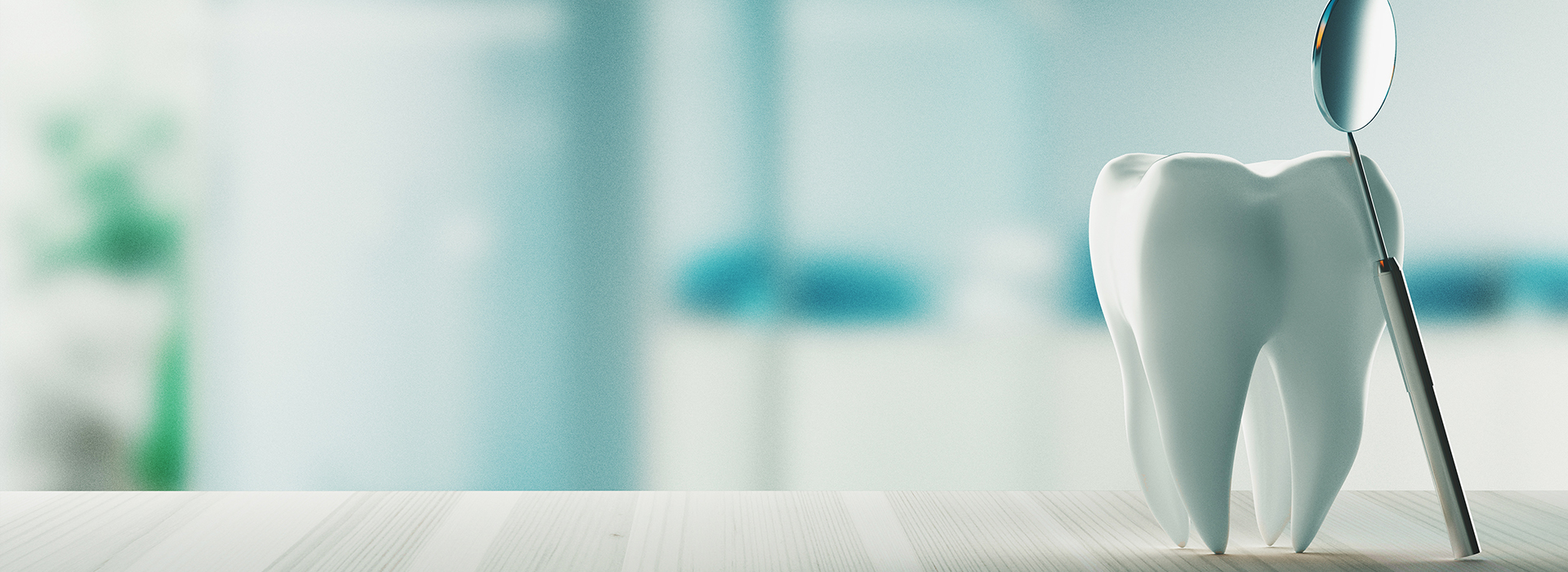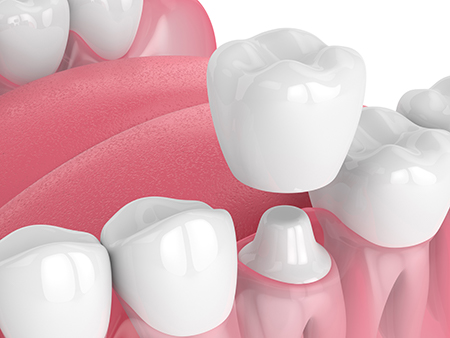
Our Office
Visit Us Online

At Towne Dental & Orthodontics, our work is grounded in proven clinical skill, modern technology, and an insistence on thoughtful, patient-centered care. We combine the latest restorative materials with careful planning so each treatment supports long-term dental health as well as a natural-looking smile.
Tooth enamel is the hardest material in the body, yet teeth are still susceptible to decay, cracks, and the gradual wear that comes with years of chewing and grinding. Small cavities are often restored with fillings, but when a tooth has lost significant structure or has been compromised by trauma or a root canal, a full-coverage restoration is usually the smarter choice.
All-ceramic crowns let us rebuild and protect damaged teeth without exposing patients to metal-based restorations. Modern ceramic materials combine strength, biocompatibility, and lifelike aesthetics so a crowned tooth can look and perform like a natural one while resisting stain and wear.
Deciding whether a crown is needed begins with a careful clinical exam and diagnostic imaging. We evaluate how much healthy tooth remains, whether the tooth has structural cracks, and how the tooth functions within your bite. The goal is to choose a solution that restores durability while preserving as much natural tooth as possible.
Typical situations that lead us to recommend a crown include teeth with large restorations that no longer provide adequate strength, fractures that extend into deeper layers of the tooth, or teeth that have undergone root canal therapy and require protective coverage. Crowns are also the standard restorative option for implant abutments and for anchoring bridges.
Beyond strength and protection, crowns are used for esthetic refinements when a front tooth is discolored, misshapen, or out of proportion. When properly selected and placed, a ceramic crown can restore comfort, function, and confidence without drawing attention to the restoration itself.
Repair and protect a tooth with extensive decay or structural damage
Replace a large, failing filling
Restore an implant-supported replacement tooth
Provide stable coverage for bridge abutment teeth
Reinforce a tooth after endodontic (root canal) therapy
Correct the appearance of a dark, misshapen, or undersized tooth
Address functional problems related to bite or wear

Ceramic crowns today are engineered to mimic the optical and physical qualities of natural teeth. Unlike older porcelain-fused-to-metal restorations, contemporary all-ceramic solutions are metal-free throughout, which improves translucency and eliminates the dark line that can sometimes appear at the gumline with metal-backed crowns.
Advances in dental ceramics have produced materials that match both the strength and the esthetic subtleties of natural enamel. These materials can be selected to balance durability and beauty depending on whether the restoration will be placed in the front or back of the mouth.
Because they are biocompatible and resistant to staining, ceramic crowns are a versatile choice for many patients. Their ability to reflect light similarly to natural tooth structure makes them particularly valuable in visible areas where a seamless appearance is a priority.
Here are several practical benefits of choosing an all-ceramic crown:
Lifelike translucency and surface texture that blend with neighboring teeth
Conservative preparations in many cases, since some ceramic systems require less tooth removal
Lighter restorations that do not contain metal or a metal substructure
Improved soft-tissue response around the margin due to biocompatible surfaces
Resistance to staining and discoloration over time
Elimination of metal sensitivities or aesthetic concerns associated with metal margins
A natural overall appearance without a visible metal line at the gumline

Not all ceramics are identical. The choice of material depends on the tooth's location, how much chewing force it needs to withstand, the color and translucency desired, and whether the restoration will be layered or monolithic. Our aim is to match the material to the clinical requirements so the result performs well and looks natural.
For example, front teeth typically benefit from ceramics that offer high translucency and superior color-matching characteristics. Back teeth often require materials with extra fracture resistance. In many cases, newer generation ceramics provide a successful balance of both — allowing a single material to be used in more situations than in the past.
We evaluate each case on its individual merits and recommend a material that aligns with both functional demands and esthetic goals. When appropriate, we discuss the reasons for our recommendation so patients understand the trade-offs and expected outcomes.
Common ceramic options include:
Lithium disilicate — prized for its attractive translucency and strong bond to tooth structure
Leucite-reinforced pressable porcelain — offers excellent esthetics and is often used for veneers and anterior crowns
Monolithic zirconia — highly durable and well-suited for posterior crowns and situations demanding maximal strength
High-translucency zirconia — a newer option that blends improved esthetics with robust performance

The treatment sequence for a ceramic crown usually begins with a thorough exam, digital X-rays, and an assessment of your bite. If the tooth requires a root canal or additional buildup to support the crown, that work is performed first. Clear communication about the plan helps ensure predictable results.
Next, the tooth is shaped to create space for the crown. We take digital impressions or conventional impressions depending on the case. A temporary crown may be used while the final restoration is fabricated; when precise esthetics are essential or same-day fabrication is available, we can sometimes complete the crown in a single visit.
At placement, the crown is tried in, adjusted for fit and bite, and then permanently cemented with materials chosen to maximize strength and marginal integrity. After placement, we check how the tooth contacts neighboring teeth and make any minor refinements to ensure comfort and function.
Long-term success also depends on good home care and regular professional exams. Ceramic crowns are durable, but they perform best when maintained with daily brushing, flossing, and routine dental visits to monitor your bite and the health of surrounding tissues.
Our team emphasizes conservative, evidence-based dentistry and individualized treatment planning. With access to advanced restorative materials and an in-house lab, we maintain close control over the fabrication process so color, fit, and contour meet the highest standards.
We combine clinical expertise with modern tools — including digital imaging and restorative design — to deliver crowns that are comfortable, durable, and visually harmonious with the rest of your smile. Our focus is on creating solutions that support oral health for years to come.
If you are considering a crown to restore function or improve appearance, our team is prepared to explain your options and recommend a plan that respects your priorities. Towne Dental & Orthodontics works to make each restoration predictable and long-lasting while maintaining a natural result.
In summary, ceramic crowns provide a metal-free, durable, and esthetic way to restore damaged or weakened teeth. If you would like to learn more about ceramic crown options or want to discuss a tooth that concerns you, please contact us for more information.
While a dental filling is designed to replace a portion of a decayed or damaged tooth, a dental crown offers full coverage to restore the tooth’s entire outer surface. A well-fitting dental crown not only protects and strengthens the underlying tooth structure, but it also restores the tooth’s appearance and function.
The procedure for getting an all-ceramic crown is much like the procedure for getting any other type of crown. In all cases, the tooth needs to be prepared, an impression taken, and a permanent crown cemented into place. A single all-ceramic crown can typically be fabricated over the course of two visits. However, with CAD/CAM technology, a same-day crown can be fabricated from start to finish in a single visit. With the first approach, a temporary crown is typically worn until the second visit, when the permanent restoration is placed. As with every treatment plan, our office will explain your best options in care.
As the name implies, a temporary crown is only worn for a short time until the permanent crown is placed. A temporary crown is typically fabricated from durable tooth-colored dental acrylics. While designed to protect the underlying tooth between appointments, and until your new permanent crown gets placed, a temporary crown is also fabricated to look like a natural tooth and maintain the look of your smile.
While you should feel better having an attractive and functional tooth to restore your smile, your tooth may feel a little sensitive following treatment. This initial sensitivity will subside. We take great care to make sure your new restoration looks great, fits well, and your bite is perfect. However, we’re always happy to make any minor adjustments to ensure your comfort.
With some exceptions, teeth with root canal procedures are typically restored and protected from further damage with a full-coverage crown. Based on what’s best for your smile, our office will recommend the most appropriate restoration to maintain the health and longevity of your tooth following a root canal procedure.
A dental crown is a long-term restoration that, if properly cared for, can serve you well for many years to come. Once your new crown is placed, it requires the same brushing, flossing, and periodic checkups as your natural teeth. Avoid biting your fingernails and chewing on hard or sticky objects such as ice, pencils, or taffy, which can damage or loosen your crown. Remember, clenching and grinding your teeth puts excessive pressure on both natural teeth and dental restorations. Unless treated, this habit can compromise the longevity and integrity of your dental work, including crowns.
Although your new all-ceramic crown restores the tooth's strength, form, and function, you can still develop dental disease in the absence of proper care. To prevent gum disease and tooth decay, it’s essential to brush and floss as instructed and see our office for routine checkups, cleanings, and care.
How long a dental crown lasts depends on various factors, including your level of oral care, diet, and oral habits. While the standard answer is that dental crowns can last anywhere from 5 to 15 years, existing literature confirms that most dental crowns remain in place at 15 to 20 years.
At the office of Towne Dental & Orthodontics, we strive to provide the highest quality of care to address all your dental needs. Once we’ve had the opportunity to examine your smile, we can give you a clear picture of any dental issues that are present, along with a quote for how much treatment will be. The cost of dental crowns can vary a little, depending on the type of crown and its location. Our goals are to provide the highest quality of care and help patients begin treatment without additional financial stress or delay. We’re always happy to answer all your questions on dental insurance coverage, available financing, and payment plans.
Coverage for all-ceramic crowns depends on your dental insurance plan. Today, many dental plans provide some level of coverage for all-ceramic crowns. At the office of Towne Dental & Orthodontics, we work with patients to optimize their dental benefits and get the care they need to maintain healthy and beautiful smiles!
Ceramic crowns are full-coverage restorations made from metal-free dental ceramics engineered to mimic the color and translucency of natural teeth. These restorations restore tooth form and function while eliminating the metal substructure used in older crown systems. Because they are biocompatible and stain-resistant, ceramic crowns are often chosen for patients who prioritize a natural appearance.
Compared with porcelain-fused-to-metal crowns, all-ceramic crowns avoid the dark line that can appear at the gumline and generally offer superior optical qualities. Modern ceramics can be selected to balance strength and esthetics depending on the tooth's location and the patient's needs. Advances in ceramic technology have narrowed the performance gap between appearance-focused and strength-focused materials.
A crown is recommended when a tooth has lost significant structure from decay, fracture, or previous large restorations and a filling would not provide adequate strength. Crowns are also commonly advised after root canal therapy to protect and reinforce the remaining tooth structure. In restorative planning, a crown may be the preferred option when a predictable, long-lasting result is the priority.
Crowns are also used for esthetic corrections when a front tooth is badly discolored, misshapen, or proportionally small. They serve as the standard restoration for implant abutments and for anchoring bridge units when teeth adjacent to a gap require stable coverage. Clinical examination and imaging determine whether a crown is the most appropriate solution for a given tooth.
Selecting a ceramic material depends on the tooth's position, the amount of chewing force it must withstand, and the esthetic demands of the case. For highly visible front teeth, materials with greater translucency and color-matching ability are often preferred, while posterior teeth may require ceramics with enhanced fracture resistance. The clinician weighs these functional and esthetic considerations when recommending a material.
Common options include lithium disilicate for a strong, esthetic bond to tooth structure; monolithic zirconia for maximum durability in high-stress areas; and layered or pressable porcelains for exceptional anterior esthetics. Each material has trade-offs in terms of thickness, preparation needs, and optical properties, and your dentist will explain the reasons behind the recommended choice. Shared decision-making ensures the selected material aligns with your goals and clinical requirements.
Treatment typically begins with a thorough clinical exam, diagnostic imaging, and a discussion of goals and options. If needed, preliminary procedures such as root canal therapy or a buildup to replace missing tooth structure are completed before crown preparation. These steps create a stable foundation for the final restoration and help ensure a predictable outcome.
Once the tooth is prepared, the clinician takes digital scans or conventional impressions and selects a shade. Depending on the workflow, a temporary crown may be placed while the final restoration is fabricated, or the crown may be milled and placed the same day when CAD/CAM technology is used. At the appointment for final placement the crown is tried in, adjusted for fit and bite, and permanently cemented with care to achieve proper marginal integrity and comfort.
Yes, many ceramic crowns can be completed in a single visit using CAD/CAM systems that capture digital impressions and mill restorations on site. This same-day workflow eliminates the need for temporary crowns and reduces the number of appointments required for treatment. It is particularly efficient for single-tooth restorations when the case is straightforward and esthetic demands can be met chairside.
Not all cases are suitable for a same-day approach; complex esthetic layering, multiple adjacent crowns, or situations requiring laboratory customization may still benefit from a traditional lab-fabricated route. Your dentist will evaluate clinical factors and discuss whether a same-day crown is appropriate for your specific needs. At Towne Dental & Orthodontics, we use digital imaging and restorative design to determine the most predictable workflow for each patient.
Ceramic crowns are durable restorations that can last many years when properly designed, placed, and maintained. Longevity depends on factors such as the chosen material, the amount of remaining tooth structure, the quality of the cementation, and the forces exerted on the restoration during chewing and grinding. Proper bite management and adequate support from surrounding teeth also influence how well a crown performs over time.
Patient-related factors such as oral hygiene, smoking, diet, and parafunctional habits like bruxism can impact the lifespan of a crown. Regular dental visits allow the team to monitor the crown, surrounding gum tissue, and occlusion so minor concerns can be addressed before they become major problems. With attentive home care and routine professional checkups, ceramic crowns provide a stable and esthetic long-term solution.
Caring for a ceramic crown is very similar to caring for a natural tooth: brush twice daily with a fluoride toothpaste and clean between teeth daily using floss or interdental cleaners. Gentle, thorough plaque control helps protect the crown margin and the supporting gum tissue from inflammation and decay. Avoiding abrasive powders and hard scrubbing preserves the crown's glazed surface and esthetic finish.
Protective measures such as wearing a night guard if you grind your teeth and avoiding chewing on very hard objects can reduce the risk of chipping or fracture. Report any new sensitivity, looseness, or changes in how the crown feels so your dentist can evaluate the restoration promptly. Routine professional exams and cleanings help maintain both the crown and the health of surrounding teeth and tissues.
Contemporary ceramic materials and advanced shading techniques allow crowns to blend seamlessly with adjacent teeth when matched correctly. Factors such as translucency, surface texture, and subtle color nuances are considered during shade selection and characterization to achieve a natural appearance. Dentists often use digital photography and shade guides to reproduce the surrounding tooth structure accurately.
Layered ceramic techniques and custom staining can further refine a crown's appearance in highly esthetic cases. Communication about your esthetic goals and any reference photos of your natural smile helps the team create a result that looks harmonious. In many cases, ceramic crowns are indistinguishable from natural teeth when designed and fabricated with attention to detail.
Yes, crowns are frequently recommended after root canal therapy because the treated tooth can become more brittle and benefit from full-coverage protection. When a crown follows a root canal, the tooth may first receive a buildup or post-and-core to provide sufficient support for the restoration. The crown then restores form and function while shielding the remaining tooth structure.
Ceramic crowns can also be used as implant-supported restorations, either cemented to an abutment or designed as screw-retained crowns depending on the implant system and clinical situation. Material choice and connection type are considered to optimize strength and esthetics for implant restorations. Your dentist will explain the planning and sequencing required for a successful implant-supported ceramic crown.
Our team emphasizes conservative, evidence-based restorative care and detailed treatment planning to deliver predictable, long-lasting results. We combine digital imaging, restorative design tools, and access to modern ceramic materials to control color, fit, and contour throughout the fabrication process. Clinical experience and attention to occlusion and tissue health help ensure crowns perform well in function and esthetics.
We focus on clear communication so patients understand material choices, the treatment sequence, and what to expect during recovery and long-term maintenance. Follow-up care and regular monitoring allow us to address minor issues early and support the restoration's longevity. If you have questions about ceramic crown options, our Waller team will review your case and recommend a plan that aligns with your goals and clinical needs.